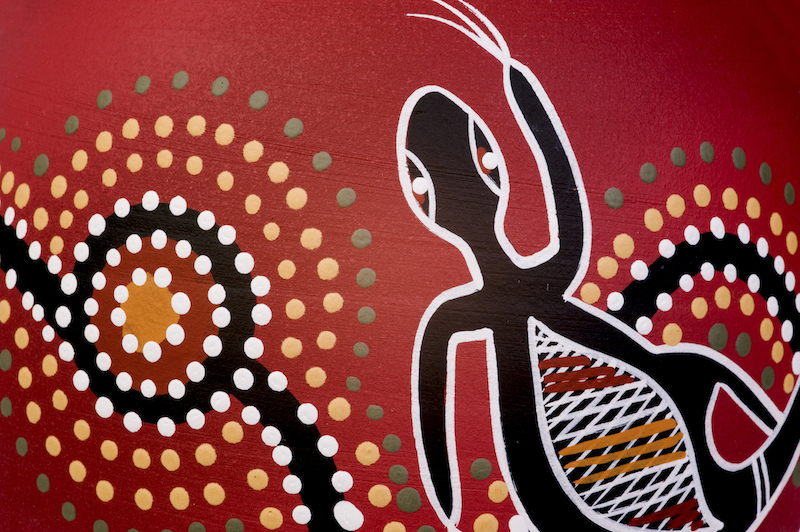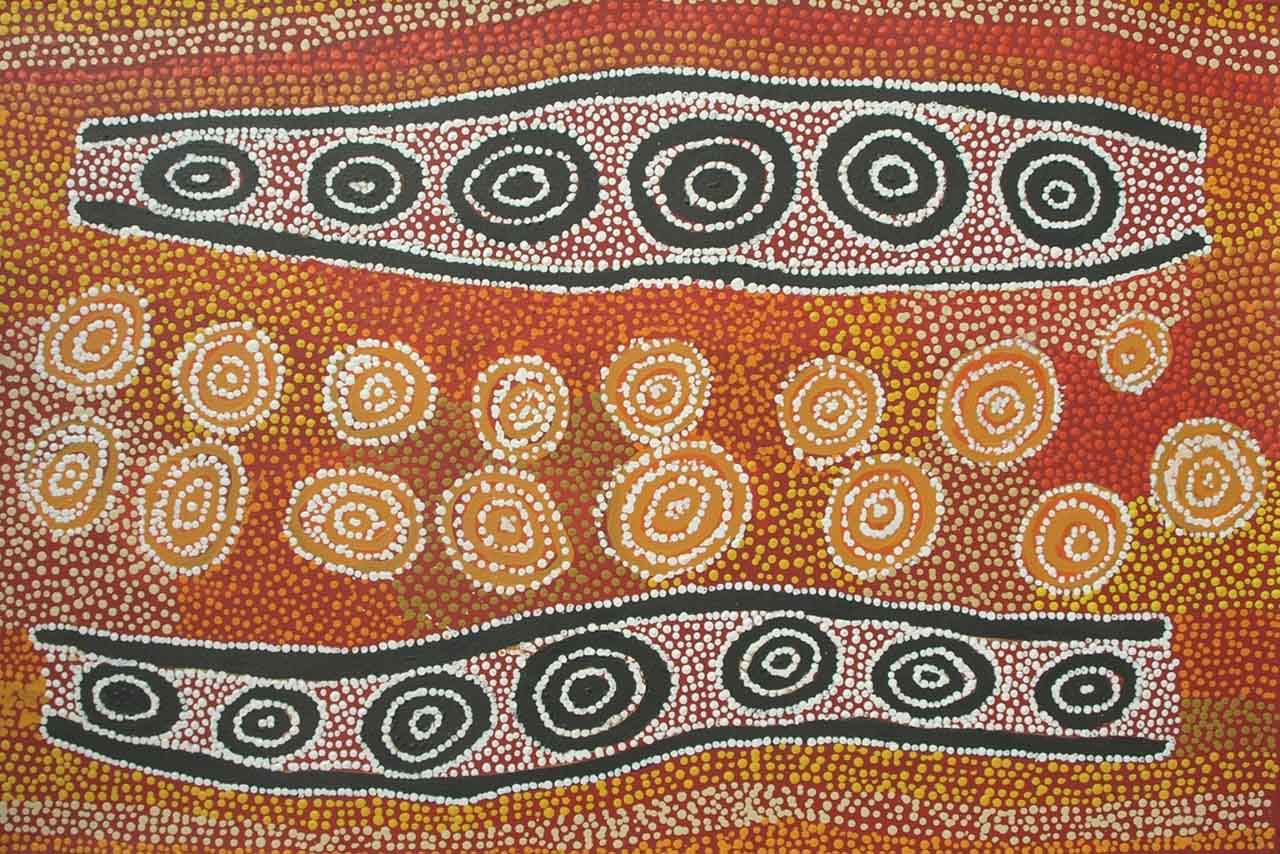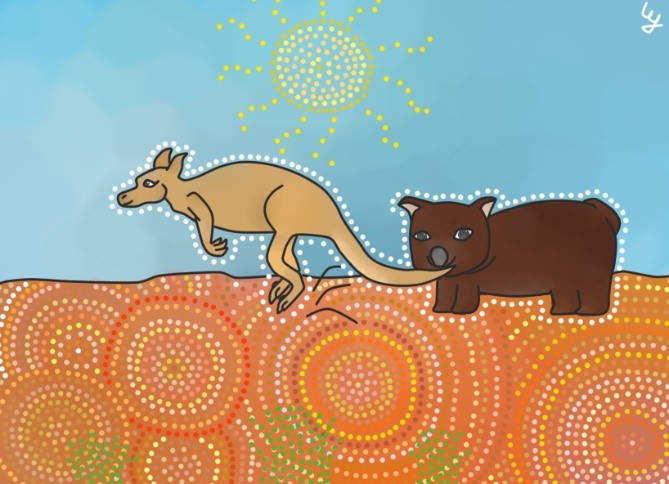The Dreamtime: A Journey into the Aboriginal Worldview
The Dreamtime: A Journey into the Aboriginal Worldview

The Aboriginal people of Australia, custodians of one of the oldest living cultures on Earth, possess a unique and profound relationship with the natural world. This relationship extends beyond the physical realm, into a spiritual dimension known as the Dreamtime, or Dreaming. This ethereal realm is not merely a collection of stories or myths, but a fundamental belief system that shapes their understanding of the universe, their connection to the land, and their place within it.
The Dreamtime: A Tapestry of Creation and Connection
Related Articles: The Dreamtime: A Journey into the Aboriginal Worldview
- The Collin Tribe: A Legacy Of Innovation And Collaboration In Sydney
- A Taste Of The Outback: Exploring The Tiny Treasures Of Australia’s Native Orange Fruits
- A Taste Of Paradise: Exploring Australia’s Most Popular Fruits
- The Bear Paw Print: A Symbol Of Strength, Protection, And Connection
- Unlocking The Beauty Of Aboriginal Girls’ Names: A Journey Through Meaning And Tradition
The Dreamtime, also known as Tjukurpa, is a concept that transcends time and space. It is the foundation of Aboriginal cosmology, where the ancestral beings, or "spirit ancestors," are believed to have created the land, its features, and all life upon it. These ancestral beings, often depicted as powerful and transformative creatures, travelled across the land, shaping its contours, establishing its laws, and leaving their mark in the form of sacred sites, natural formations, and even the very essence of the landscape.
The Dreamtime is not a singular event in the past, but a continuous, ongoing process. It is a living, breathing entity that connects the past, present, and future, weaving together the stories of creation, the laws of the land, and the responsibilities of the people. It is a realm where the spirit world and the physical world intertwine, where the ancestors continue to guide and influence the lives of the living.
Beyond the Physical: The Dreamtime’s Influence on Aboriginal Life
The Dreamtime’s influence is deeply ingrained in every aspect of Aboriginal life. It shapes their understanding of:
- Land Ownership and Stewardship: The Dreamtime is the basis for Aboriginal land ownership. Each clan or tribe has a specific connection to a particular territory, defined by the journeys and actions of their ancestors during the Dreamtime. This connection is not merely a matter of physical possession but a spiritual responsibility to care for and protect the land and its resources.
- Cultural Practices and Ceremonies: Traditional Aboriginal ceremonies, dances, and rituals are all deeply rooted in the Dreamtime. These practices serve as a means to connect with the ancestors, reaffirm their connection to the land, and perpetuate their cultural knowledge.
- Art and Storytelling: Aboriginal art, whether it be rock paintings, body painting, or intricate sand designs, is a powerful visual language that communicates the stories and lessons of the Dreamtime. These artistic expressions serve as a tangible record of their history, beliefs, and connection to the land.
- Social Structure and Law: The Dreamtime dictates the social structure of Aboriginal communities, outlining roles, responsibilities, and obligations. The laws of the Dreamtime are passed down through generations, ensuring the continued harmony and well-being of the community.
- Personal Identity and Spirituality: The Dreamtime provides a framework for understanding individual identity and purpose. Each individual is believed to have a connection to a specific ancestor, and their journey through life is guided by the lessons and teachings of that ancestor.

The Dreamtime: A Realm of Dreams and Visions
The Dreamtime is not merely a realm of the past; it is also a place of dreams and visions. Through dreams, individuals can connect with the ancestral beings, receive guidance, and gain insights into the world around them. These dreams are not simply fleeting images but powerful messages that can shape an individual’s life and decisions.

The Dreamtime: A Source of Strength and Resilience
The belief in the Dreamtime has been a source of strength and resilience for Aboriginal people throughout generations. It has provided a sense of identity, purpose, and belonging, even in the face of immense challenges, including colonization, dispossession, and cultural suppression. The Dreamtime continues to be a vital source of cultural knowledge, spiritual guidance, and hope for the future.
The Dreamtime: A Bridge to Understanding
Understanding the Dreamtime is crucial to understanding the Aboriginal worldview and appreciating the rich tapestry of their culture. It is a complex and multifaceted concept that cannot be fully grasped through a simple explanation. However, by delving into its meaning, we can begin to understand the deep spiritual connection that Aboriginal people have with the land, their ancestors, and their cultural heritage.
FAQ: Exploring the Dreamtime

Q: Is the Dreamtime a literal place?
A: The Dreamtime is not a physical location but a spiritual realm that exists beyond the boundaries of time and space. It is a state of being, a realm of interconnectedness, where the physical and spiritual worlds converge.
Q: How do Aboriginal people access the Dreamtime?
A: Access to the Dreamtime is achieved through various means, including:
- Dreams: Dreams are considered a powerful pathway to the Dreamtime, where individuals can connect with the ancestors and receive guidance.
- Ceremonies and Rituals: Traditional ceremonies and rituals serve as a conduit to the Dreamtime, allowing individuals to connect with the ancestral beings and reaffirm their connection to the land.
- Art and Storytelling: Aboriginal art and storytelling are powerful mediums for accessing the Dreamtime, conveying the stories and lessons of the ancestors.
Q: How does the Dreamtime influence contemporary Aboriginal life?
A: The Dreamtime continues to be a vital force in contemporary Aboriginal life, influencing:
- Land Rights and Indigenous Identity: The Dreamtime serves as the foundation for Aboriginal land rights and provides a sense of identity and connection to the land.
- Cultural Practices and Traditions: Traditional ceremonies, art forms, and storytelling practices remain deeply rooted in the Dreamtime, ensuring the continuation of Aboriginal cultural heritage.
- Social and Spiritual Wellbeing: The Dreamtime provides a framework for understanding social structure, personal responsibility, and spiritual connection, fostering a sense of community and belonging.
Q: How can non-Aboriginal people learn more about the Dreamtime?
A: There are numerous ways to learn more about the Dreamtime:
- Visit Aboriginal art galleries and museums: These institutions showcase the rich artistic expressions of the Dreamtime, providing insights into Aboriginal beliefs and history.
- Attend Aboriginal cultural events and performances: These events offer an opportunity to experience the vibrant traditions and stories of the Dreamtime firsthand.
- Engage with Aboriginal communities and elders: Seek out opportunities to learn from Aboriginal people directly, respecting their cultural knowledge and traditions.
- Read books and articles written by Aboriginal authors and scholars: These resources provide valuable insights into the Dreamtime from an Aboriginal perspective.
By understanding the Dreamtime, we can gain a deeper appreciation for the rich and complex worldview of Aboriginal people, their profound connection to the land, and the enduring legacy of their cultural heritage.

Closure
Thus, we hope this article has provided valuable insights into The Dreamtime: A Journey into the Aboriginal Worldview. We hope you find this article informative and beneficial. See you in our next article!


